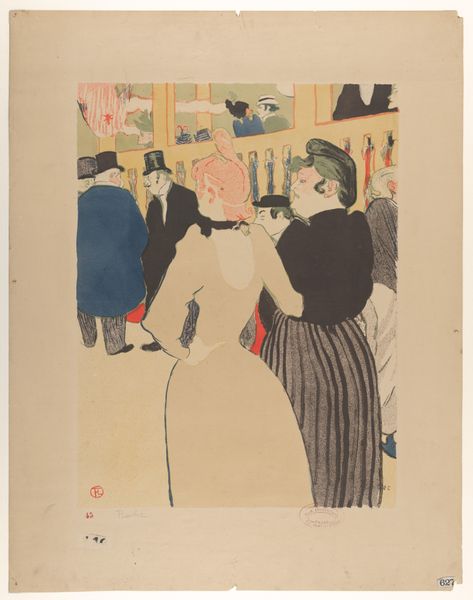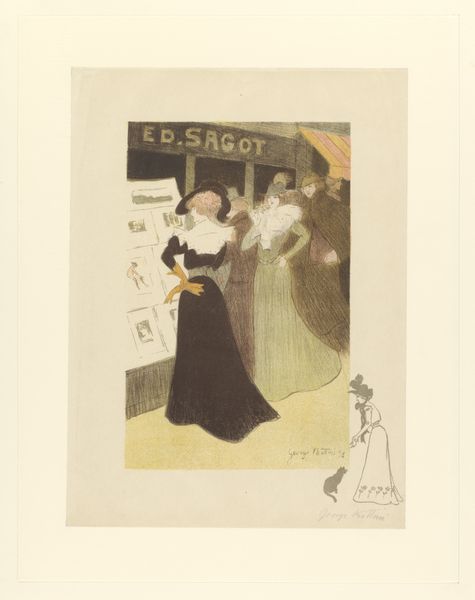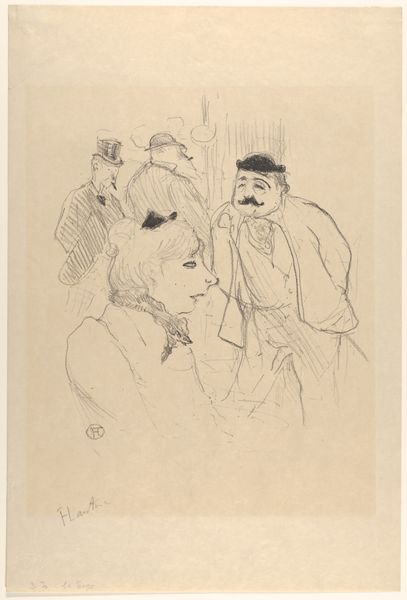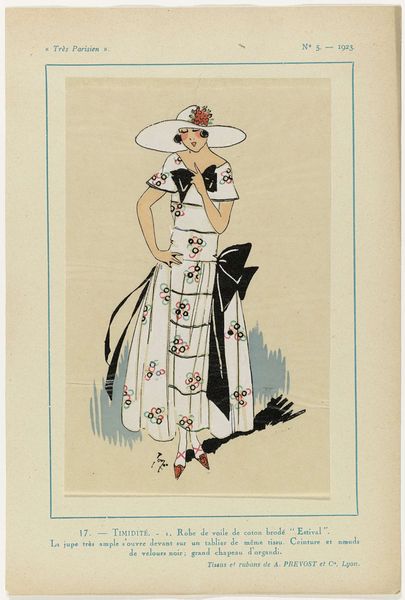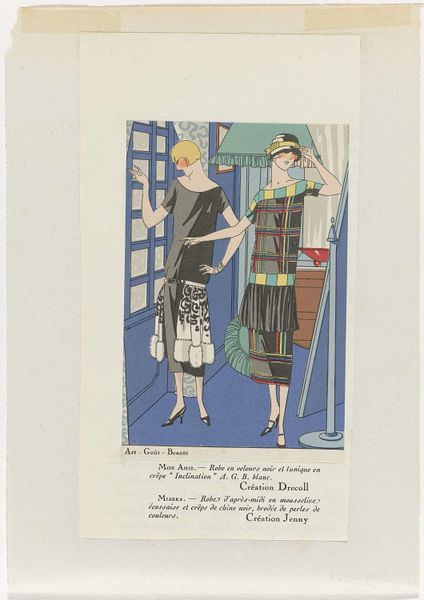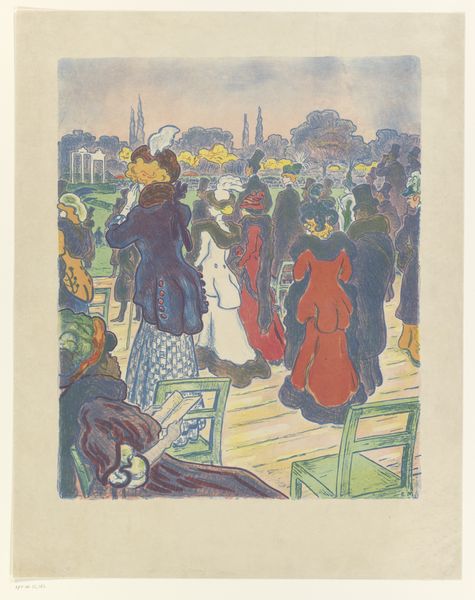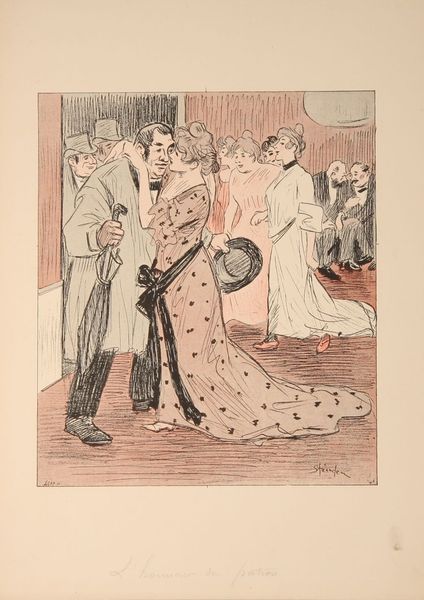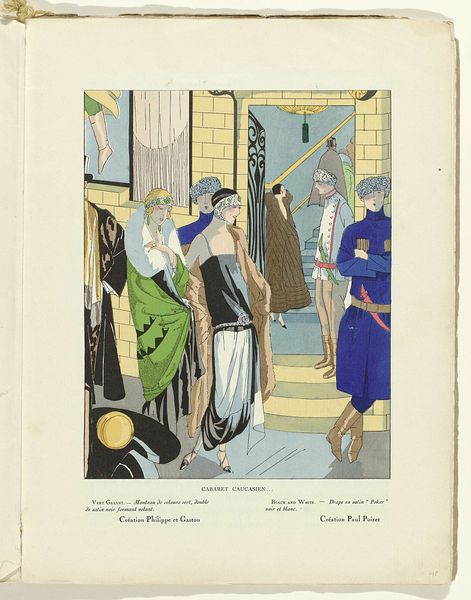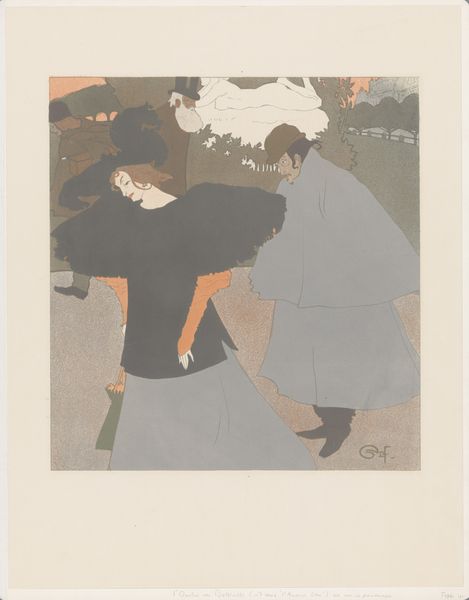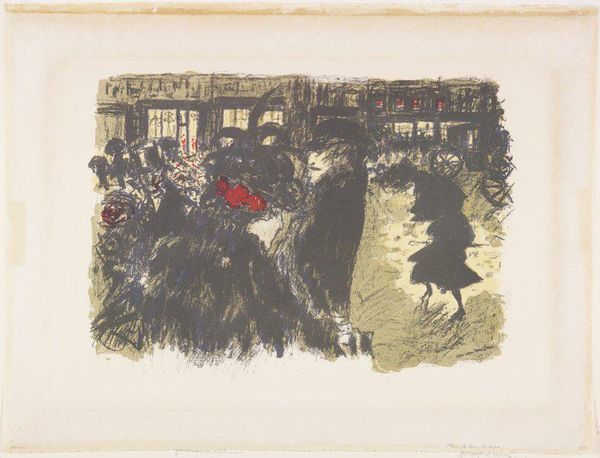
Dimensions: 650 mm (height) x 498 mm (width) (bladmaal)
Curator: Toulouse-Lautrec’s “At the Moulin Rouge, la Goulue and her Sister,” a lithograph dating back to 1892, offers a fascinating glimpse into Parisian nightlife. Editor: Ooh, the way the scene's framed makes me feel like I'm squished right in the crowd, elbow to elbow! Sort of exciting, but also a bit claustrophobic, you know? Curator: That's precisely the energy Toulouse-Lautrec captures. The artist places us among the bourgeoisie, flaneurs, and entertainers of Montmartre. "La Goulue," meaning "the glutton," was a famous can-can dancer. Editor: Can you imagine?! Back then, Moulin Rouge was all about can-can dancers; scandalous and cutting edge at the same time. Her stance is so interesting... confident, a bit sassy, and completely at ease, you know? Almost like she owns the place. Curator: Exactly! This image challenges societal norms around performance, gender and class by depicting La Goulue not as an object, but as a powerful figure claiming her space. Look at how the composition is carefully structured with the viewer and these spectators in the background separated through the means of line, shape and color from La Goulue, who is a powerful figure claiming her space. This approach emphasizes how spectacle interacts with spectatorship. Editor: It also speaks to the art movements he aligned himself with such as Impressionism, the Japanese tradition of Ukiyo-e, and later the Post-impressionist movement in a new context with sharp lines. Curator: Right! And he wasn't just passively recording the scene; Toulouse-Lautrec’s stylistic choices served a distinct purpose. The flattening of space, bold outlines and planar style were significantly influenced by Japanese woodblock prints, transforming traditional figuration. Editor: There's something incredibly vital about works like these. It transports you to another time while asking the fundamental questions: how do we create art? What are we looking at? It's cool. Curator: Ultimately, that tension makes us think more deeply about how performance intersects with society, and what it really means to observe, and be observed, through an artist’s singular lens. Editor: Well, now I need to see more by him! Perhaps this Lithograph is trying to challenge art in of itself and that is something that is not obvious on its surface.
Comments
No comments
Be the first to comment and join the conversation on the ultimate creative platform.
